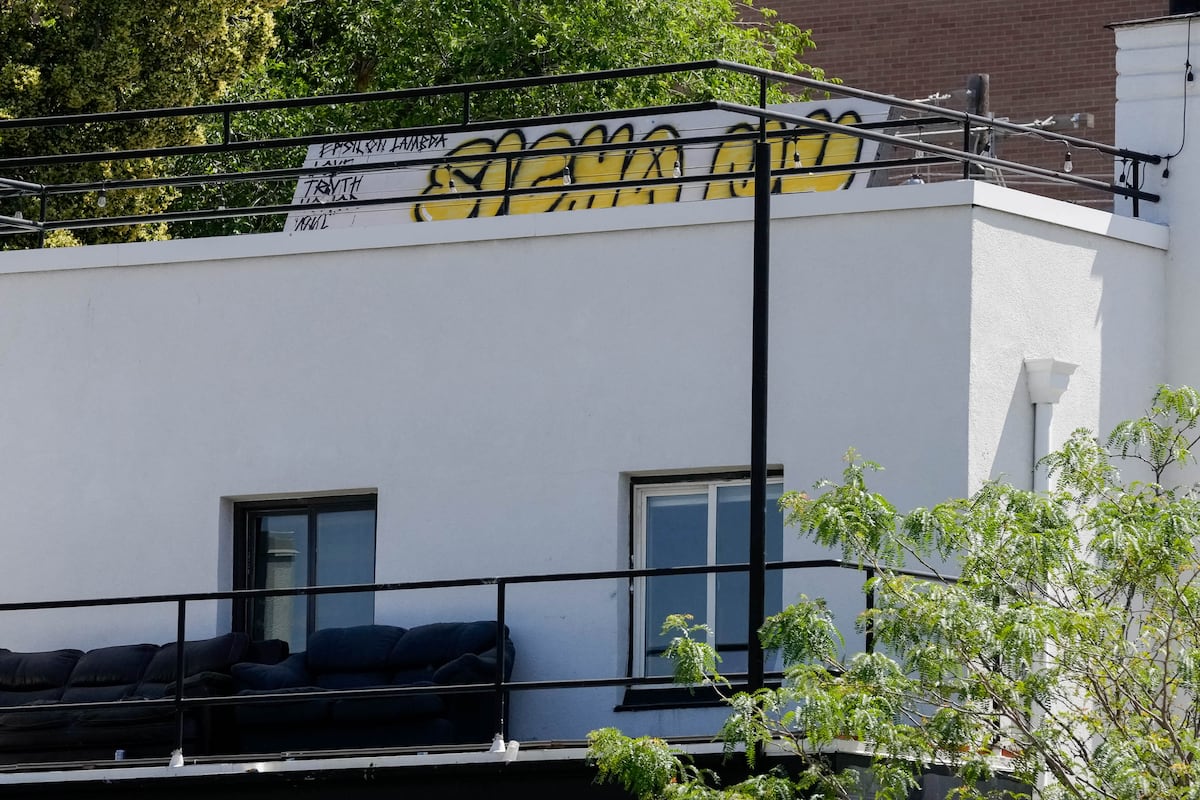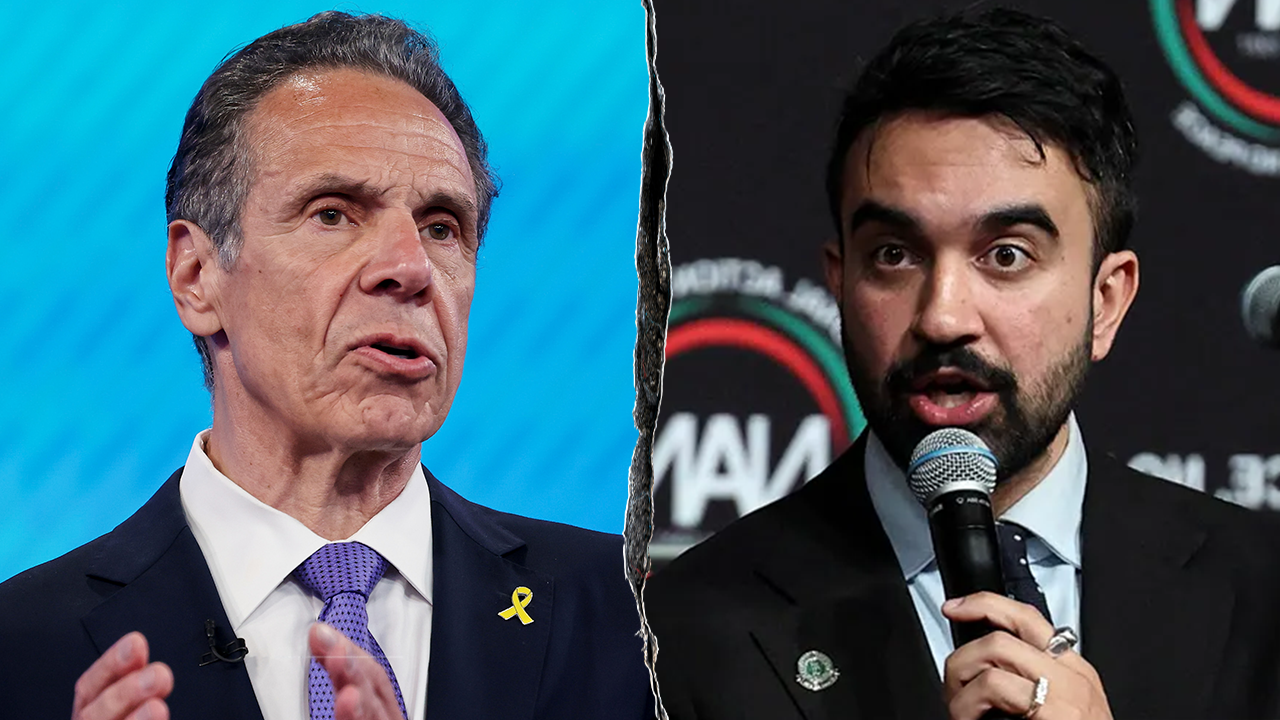The fraternity’s pledges were blindfolded and didn’t know until they could see again that they had been brought — without the option to refuse — to a South Salt Lake strip club.
The members who organized the visit called themselves “The Strip Club Club.” And they weren’t just senior leaders of the fraternity. Many were alumni, representing generations of past members. Some were 50 or older.
That fall 2024 trip was one of 14 documented instances of hazing that “more likely than not” happened at the University of Utah’s Sigma Nu fraternity over the last school year, according to an investigation the university conducted in May. Based on those findings, the school has moved to shut down the fraternity, terminating any affiliation with it.
“We have no confidence that future members of the fraternity could or would break tradition from this destructive history and practice,” the report concluded, after calling the violations “egregious.”
Sigma Nu cannot reapply for recognition at the U. until at least 2031 — “allowing enough time for current members and leaders of the chapter to graduate,” the school said.
The fraternity’s national affiliate organization has also suspended the group’s charter indefinitely.
“Sigma Nu prohibits hazing, and each fraternity member voluntarily commits to uphold and honor this prohibition,” said Brad Beacham, executive director of Sigma Nu Fraternity, Inc., in a letter dated June 2. Sigma Nu’s mission, Beacham wrote, is “to develop ethical and honorable leaders for society.”
In a 19-page report, university officials detailed repeated hazing beyond the strip club visit. Some recruits reported that they were forced to:
• Drink to the point “they couldn’t remember anything.” (Some pledges were under the legal drinking age.)
• Watch “brain rot” videos that featured porn and images of people being killed.
• Buy and use illegal drugs, particularly marijuana, and carry that with them at all times in a “pledge pack.”
• Do chores, often in the early morning hours.
• Sleep on a cement floor in the frat house basement, while older members would harass them so they couldn’t actually sleep.
• Answer to derogatory names given to them by older members.
In an email sent to Sigma Nu on May 19, Lori McDonald, the U.’s vice president for student affairs, wrote that the fraternity’s hazing history wasn’t limited to the latest fall and spring semesters.
“There has been a pattern of misbehavior over the past six years,” McDonald wrote, “including hazing, alcohol-related violations and destruction of property.”
Most of the rituals, the report says, had been ongoing since at least 2021.
The U. says it first received information about alleged hazing at Sigma Nu on Jan. 28 — when the fraternity was on suspension. The university interviewed more than 50 people connected to Sigma Nu, including current and former leaders, active members and recruits.
Ultimately, the investigation found that the fraternity had broken university policy on hazing — in all three categories the university documents (subtle, harassment and violent) — and likely also broke state and federal law.
In its report, the U. said it was particularly worried that hazing continued at Sigma Nu after several previous warnings and reprimands after investigations in 2018 and 2023. And school leaders were even more troubled, according to the report, that alumni were taking part.
“It is apparent that, at least in Utah, there is a deeply engrained culture and practice of hazing traditions within Sigma Nu,” the U. said.
How Sigma Nu hazed its recruits
Overall, Sigma Nu ran its initiation process with a demerit system, according to the report. Any time a recruit didn’t complete a task — or any time a leader felt they didn’t meet expectations — the pledge was given a mark against them.
Random quizzes were a regular part of initiation, the report states. Recruits were asked to remember the names of fraternity members going back to 2018. These “tests” often took place in the early morning, sometimes at 3 a.m., with loud music blasting while recruits tried to answer.
Pledges also were quizzed after watching explicit and violent videos. Sometimes they were told to write essays about what they viewed.
“New members were told they could request the videos to stop,” the U.’s report said, “but were fearful of speaking up or making such a request.”
Demerits were also handed out if a recruit didn’t participate in chores — with older members telling pledges that anyone who didn’t clean would be “humped.”
New members were expected to scrub the chapter house every Monday, Wednesday and Friday, as well as after any parties. Older members also created messes on purpose for recruits to clean, the report states; recruits were told they could work off demerits if they performed extra cleaning.
Cleaning often happened extremely early. That would violate both the U.’s policy and federal hazing policies, which prohibit any activity that doesn’t allow pledges to get enough sleep.
Such practices go back decades, according to one former member. Kase Johnstun, recounted in a February blog post the same experiences as a Sigma Nu recruit at the U. in 1995. He was initiated but left the fraternity after that.
Johnstun wrote that he experienced forced drinking, mandatory cleaning, harassment and jokes about assaulting women.
“The elders made us get down on our knees and clean the blackened kitchen floor of the most disgusting house on Greek Row,” Johnstun wrote. “The floor turned out to be white linoleum beneath all the gunk.”
(Francisco Kjolseth | The Salt Lake Tribune) Sigma Nu fraternity house at 95 South Wolcott St. and 100 S. at the University of Utah is pictured Wednesday, May 11, 2025.
Alcohol, drugs and blindfolds
One ritual the U. report criticized harshly was referred to as “Don’t F— Your Brother.”
That event took place in November. New members were placed in a circle, where a 30-pack of beer — along with vodka and whiskey — were given to one member to start, then passed around.
Each recruit was told to drink as much as they could “to not leave the new member at the end of the circle with a large amount of alcohol/liquor to drink.” If they didn’t finish the alcohol by the end, they were told they wouldn’t be initiated.
The fraternity’s president and other members, according to the U.’s investigative report, later apologized to the recruits for the event, but said they did it so the younger members would bond.
Alcohol was often present at events even if it was not approved in advance by the university or part of the granted “exemption” to the alcohol-free housing policy. Two such events, both last October, were a Halloween party and a parent’s weekend tailgate. At both, recruits were told to make boxes to conceal kegs.
Recruits were told to plan and pay for the Halloween party. The U.’s report said the party cost each student between $150 and $300.
Each recruit was also allegedly required to carry around a “pledge pack” that included tobacco, condoms, a golf tee, gum and a marijuana pen. The packs’ purpose, the report states, was “if an active member wanted something (i.e., an item in these packs), they would ask new members to provide it to them from their pack.”
Other random items recruits were often told to purchase included blow-up dolls, dildos, cigarettes, pacifiers, energy pills, drugs and liquor.
Older fraternity members were often allowed to be more harsh in their hazing, the U. said, based on a color-coded system. More experienced members (assigned “purple”) could “quiz/yell/reprimand new members at random” and withhold the required interviews to anyone they didn’t like. Newer members (labeled “green”) were told to be more inviting. The system had been in place since the 1980s, according to the report, and Johnstun described it in his blog as happening in 1995.
(Francisco Kjolseth | The Salt Lake Tribune) Sigma Nu fraternity house at 95 South Wolcott St. and 100 S. at the University of Utah is pictured Wednesday, May 11, 2025.
At one initiation event in the last year, new members were given a cup of random ingredients and ordered to drink it as a “family tradition.” The ingredients included teriyaki sauce, lemon juice, vodka, pickle juice, fry sauce and beer. Once they finished the drink, they would find a number at the bottom of the cup, assigning their Sigma Nu mentor, known as a “big.”
Leaders would regularly blindfold recruits for different rituals — something that was “beyond the scope” of the Sigma Nu national office’s approved activities.
One Sigma Nu member told U. investigators: “Everyone at Sigma Nu had done it, so it was just repeated.”
Recruits were blindfolded and told to crawl through the chapter house to find their pledge pins. Older members made the exercise dangerous, the U. said, by moving the furniture, creating obstacles, and banging pots and pans to distract pledges.
During initiation week, new members were told they would go camping in Moab. Instead, they were blindfolded and led to the Sigma Nu house’s basement, where they were told to sleep on the cement floor for three days. They weren’t allowed to sleep, the report states, with older members frequently setting off fireworks to prevent it.
Sigma Nu’s century at the U.
Sigma Nu is the second fraternity at the U. to have its charter revoked in the last three years.
In 2022, the U.’s chapter of Kappa Sigma was terminated based on a reported assault at its house during a “wine Wednesday” event. A student told police she was sexually assaulted by a fraternity member while dancing. Kappa Sigma later regained its recognition in 2024.
A second sexual assault was reported in February 2022 at another U. fraternity. The U. responded at the time by temporarily suspending all fraternity and sorority activities and hosting an event for Greek life students about consent.
At the time, students started to post anonymously online about their experiences, saying assaults happened regularly at the houses along the U.’s Greek Row.
Greek Row, the area largely along 100 South at the west end of the Salt Lake City campus, is not technically the university’s property. The organizations are considered independent of the U., though the school oversees and approves fraternity and sorority activities.
One requirement that all U. fraternity and sorority members must fulfill annually is to sign an agreement not to participate in hazing.
The school said it has notified Salt Lake City, which owns the land under the Sigma Nu house, so it can decide what to do next. A city spokesperson said they didn’t immediately know what the city’s plans are.
(Chris Samuels | The Salt Lake Tribune) Fraternity and sorority houses along 100 South adjacent to the University of Utah, Tuesday, Feb. 1, 2022.
The U.’s Sigma Nu chapter was the last one operating in the state. The chapter there started in 1924, and its most famous alumnus, according to the national fraternity’s website, was Western author Wallace Stegner, who graduated from the U. in 1930 and died in 1993.
A Sigma Nu chapter at Utah State University — where legendary Brigham Young University football coach LaVell Edwards was a member from 1949 to 1952 — shut down in 2009 after a student, Michael Stark, died from alcohol poisoning during a hazing ritual.
Southern Utah University shuttered its Sigma Nu chapter in 2012 after “a hazing incident,” the details of which the school declined to share.
Alumni and ‘limited’ accountability
According to the U. report, up to 50 Sigma Nu alumni were present at different hazing events, including the strip club trip, basement “camping,” and mandatory cleanings.
Alumni “would engage in the same behaviors as the active members, such as yelling at the new members while cleaning or when new members provided incorrect answers,” the investigation found.
Those interviewed by investigators could only identify three alumni directly. Without knowing all who were there, the U. said, “there is limited means of accountability to ensure this chapter culture is no longer reinforced or encouraged among new and active members.”
The U. said it would have little recourse against alumni, who are no longer students. Sigma Nu national headquarters had said it will take steps to hold the alumni accountable but did not elaborate on how.
If there’s no action, the U. believes, the issues at the Sigma Nu chapter will never be fixed — because, the U. said in its report, “nothing the university has done in the past has served to break this culture.”
A 2018 investigation found similar hazing at Sigma Nu, including blindfolding, quizzing, drinking and forced cleaning. The U. placed the fraternity on administrative suspension for a year, and reviewed every member for possible suspension or probation. The national organization placed the chapter in “serious concern” status for an additional six months after that, fined the chapter $1,000 and required training on how to avoid hazing.
The U. again investigated Sigma Nu in 2023 for hazing with chores and cleaning. The fraternity appealed a finding of responsibility, which was overturned. After the appeal, the U.’s vice president for student affairs wrote a letter that warned Sigma Nu to “be careful to avoid any conduct that comes close to violating the letter or spirit of the rules relating to new members.”
Last November, less than a year after that letter, the U. received notice that the fraternity rented a house at Bear Lake in northern Utah to host a party. The property owner said there had been underage drinking and “significant damage.” The owner said the damages amounted to more than $41,000, and he plans to sue if there’s no resolution.
The U. said the Bear Lake situation was another factor in the decision to shut down Sigma Nu. All of the activities uncovered in its investigation, the school said, “have caused damage to the reputation of the University of Utah and the Greek system at the university.”
“If allowed to continue,” the school concluded, “[those] could potentially result in legal liability for the institution should someone be seriously harmed from those activities.”































